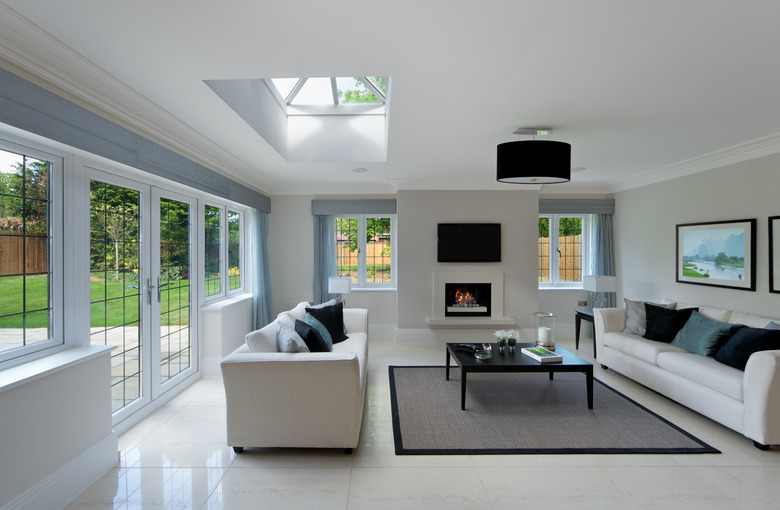How To Stop Floor Tile From Feeling Damp
We may receive a commission on purchases made from links.
Tile floors get the occasional water puddle, whether you spill a drink on your tile kitchen floor or drip when you get out of the shower in the bathroom. If your tile floor constantly feels damp, you might be dealing with another issue. Condensation on the tiles can cause damage over time and create an uncomfortable situation underfoot.
Why Tile Floors Feel Damp
Why Tile Floors Feel Damp
Cool tile floors feel nice on your feet in warmer weather, but that cool temperature can also promote condensation. When warm, humid air collides with the cool floor, condensation can form as the water vapor in the air cools and turns back into water.
The condensation on the tile floor makes it feel damp and unpleasant when you walk on it barefoot. It can also cause issues with the tile, including mold growth on the tiles and grout. You might notice a musty odor if the condensation lasts for a long period. Too much moisture can also cause the tiles to become loose or shift if the moisture affects the adhesive that holds the tiles in place.
Reduce Indoor Humidity Levels
Reduce Indoor Humidity Levels
Many normal activities you do daily, including showering and cooking, produce more moisture. You can't eliminate those activities, but being aware of them helps you anticipate floor condensation. Cooking with lids on the pot and with your range hood running can cut down on the moisture that enters the air.
Things like aquariums and indoor fountains can also increase the humidity in the area. Consider moving indoor fountains away from rooms with tile floors. Leaving the lid on your aquarium can also help lower humidity in the room. Also, avoid leaving damp items in the room, such as wet towels or clothes left on the tile floor.
Run a Dehumidifier
Run a Dehumidifier
If your home has high humidity, running a dehumidifier can help draw moisture out of the air and keep your tile floors drier. Position the dehumidifier in the room with the tile floor for best results. Dehumidifiers typically have a limited range based on the room size, so keeping your unit close to the tile floor maximizes its ability to lower the moisture in the room.
Increase Home Ventilation
Increase Home Ventilation
Another way to keep the humidity levels lower in your home is by improving ventilation. Without adequate ventilation, the moisture inside your home has nowhere to go. Improving ventilation helps air flow through the space and can help prevent moisture buildup on surfaces, like tile floors.
You can use fans to improve ventilation without making any structural changes to your home. Ceiling fans and floor fans blowing in the room keep the air moving and reduce condensation on the tile floor. Opening windows in conjunction with running the fans can also help.
Another option is adding ventilation to your home with attic vents, attic fans, and exhaust fans. Bathrooms and kitchens benefit from exhaust fans. Run the fan before, during, and after activities that generate moisture, including showers and cooking. Attic vents and fans help ventilate your home all the time for improved humidity control.
